This week I’m going to brag unapologetically. In The Zag Wag 12—Buckets I said if Filip Petrusev plays in the game against Pacific, the Bulldogs will win by a score of 91-58. The score last Saturday night: 92-59. Not too shabby. Better than me nearly predicting the score, however, was the Gonzaga Men’s Basketball team scoring that score—and defending Pacific well enough to keep them under 60 points. It was an even balance of excellence on both ends of the court for the Zags Saturday. You just cannot complain about a game where your team goes 33 for 58 shooting from the field (56.9%), shoots 9 of 18 from beyond the arc (50%) has only 7 turnovers (while forcing 15), gets 10 blocks, outrebounds, outhustles, outdefends and scores 92 on the #1 defensive team in the WCC. There were a few issues that could use some shoring up for the now 21-1 (7-0 in WCC) Bulldogs, but problems were few and far between on a very fun night in the Kennel. Not too shabby, indeed.
Jahlil Tripp led Pacific in points, rebounds, and assists for the game. He put up 21 points on 8 of 15 shooting, had 5 rebounds and added 4 assists on the night before fouling out late in the game. Tripp, who leads the Tigers in average points, rebounds and steals, is an impressive player in all respects and is relied on heavily to carry the team in many ways on both ends of the court. While allowing a player to get 21 points doesn’t sound like successful defense, Gonzaga did a great job of keeping Tripp from getting too many decent looks at the hoop and forced him to turn the ball over 6 times. Defensive pressure was particularly effective in the second half, where the elite level, 6’5” guard from Brooklyn scored only 6 points.
Killian Tillie drew the defensive assignment against Tripp to begin the game for the Zags and showed great versatility for a player his size guarding a quick wing. Tillie handed Tripp-duty off at times to Corey Kispert and Admon Gilder, but it was the coordinated defensive effort of the whole team that kept Tripp and the rest of the Pacific Offense in check. Besides holding another WCC team under 60 points, the Zags forced 15 turnovers, blocked 10 shots , had 9 steals, and held the Tigers to 35.5% shooting overall and 29.4% from deep.
Killian Tillie was an absolute monster in this game, and he is looking more and more menacing to WCC foes with each contest. Like some sort of postmodern Godzilla, harnessing the electricity of the crowd in the Kennel, he was wreaking havoc wherever he stepped on Saturday and loving every minute of it. He’s had 20 or more points in 4 of the 7 games Gonzaga has played in the WCC conference so far in January, including 22 points in both of the last 2.
The week of rest between the BYU game and the game against Pacific seems to have done the French forward very well indeed. His legs may be getting near 100% again, his shooting stroke seems to have all its smooth grace, his defensive step and leap look quicker and higher than earlier in the season—and it all shown in his stats. Unstoppable in the first half, Tillie was 7 for 8 shooting from the field and a perfect 3 for 3 from deep on his way to 17 points—2 of those coming with just over 2 minutes before halftime when Tillie drove through the middle of the key and slammed home a thunderous dunk to put the Zags up 43-28. Overall, in his 29 minutes of play, Tillie went 9 of 11 from the field (82%), 4 for 5 from beyond the arc (80%), pulled down 8 rebounds, and added 2 steals to his 22 points.
Killian Tillie and Drew Timme were the MC’s at a two-hour block party on the Bulldog’s defensive end. Tillie added 4 blocks to his already impressive stats. Despite a slender night offensively, Timme one-uped Tillie and added 5 blocked shots to his 3 rebounds and 4 points. The freshman from Texas is becoming an impressive, integral part of this team.
Gonzaga’s guards got in on the defensive fun as well, as Kispert added a block and a steal to his stats line. Pick-pockets Joel Ayayi and Admon Gilder had 2 and 3 steals respectively, and both had at least one break-away basket from the defensive to the offensive end of the court as a result of one of their steals. After getting a hand in a Pacific passing lane, Gilder swiped the ball forward, drove to the hoop ahead of any defense and elevated for another dunk (like last week, but 2-handed). Off a similar leap into the passing lane on defense, Ayayi poked the ball away and drove to the other end ahead of everyone for a more subdued lay-in. As the Bulldogs’ defense and anticipation improves, these break-aways seem to be getting more and more common.
Probably the best thing the Zags fans, players and coaching staff saw on Saturday night was Filip Petrusev taking the court despite having done down a week before in the game against BYU with a painful ankle sprain. Again, the week between games was just what the doctor ordered for both the team and the Serbian forward who leads Gonzaga in points, rebounds and blocks per game (16.1, 7.6, 1.1). He logged 20 minutes on Saturday, including a phenomenal 12-point first half that saw him scoring many of the baskets for the team in the opening minutes of play. The ankle didn’t seem a bother Petrusev as he gathered 15 points and showed some relentless strength down low on both ends of the court.
Corey Kispert topped Petrusev’s point total by 1, getting 16 and 5 rebounds on the night. He was outstanding as always, utilizing both his right and left hands in a very ambidextrous display of shooting skill off drives to the basket. He had one 3 his usual way shooting from deep, but added a 3-point play “the hard way” after gathering one of his 3 offensive rebounds and going up strong for the bucket and the foul in the middle of 3 Pacific defenders. Ayayi and Gilder continued their high-efficiency work on the offensive end as well, with Ayayi shooting 4 of 6 from the field, gathering 3 rebounds and adding 4 assists to his 10 points. Gilder went 3 of 6 from the field and added 2 assists and 5 rebounds to his 10 points. Even in these lean times roster-wise for Gonzaga, what a gift it is to have guys like Gilder and Timme off the bench.
Ryan Woolridge was another of six Bulldogs (all the starters plus Gilder) to finish in double figures for Gonzaga. He had another outstanding performance at point guard, shooting 4 for 9 from the field, 3 for 7 from deep, and added 2 rebounds and 3 assists to his 11 points. The highlight of the night for me (though Tillie’s dunk was awesome) came just a minute into the 2nd half when Woolridge sent the ball on a spider thread, through two defenders collapsing on the passing lane, toward a streaking Petrusev. Woolridge sent it perfectly into Petrusev’s hands, setting up a sweet, two-handed flush for the Serbian.
It’s hard to find fault in a night like the one Gonzaga had on Saturday, but I’m gonna try. The Bulldogs have been getting bested on the offensive glass by a few teams lately, including Santa Clara (16 to 14) and Pacific (16 to 11). Against BYU the previous Saturday, the Zags nearly eliminated the Cougars’ ability to get a put-back or a second shot attempt by allowing BYU only 1 offensive board, while gathering 9 on their own offensive end. That is an outstanding performance by Gonzaga’s defense at blocking out offensive players and crashing the glass on their own end! Of course, allowing 1 as opposed to the 16 in the other contests is a big difference.
One thing to keep in mind that should temper any criticism of the offensive rebounding stats for Gonzaga is that in both of the recent games where Gonzaga was beaten on the offensive glass stats, the Bulldogs shot very well as a team. Against Santa Clara the Zags scored 104 points on 51.5% shooting. Against Pacific, that percentage was a bit higher at 56.9%. A team shooting that well doesn’t get that many opportunities to rebound the ball off a miss on their own end, while a team shooting a low percentage (Santa Clara shot 30.4% and Pacific shot 35.5%) has a lot more misses that could lead to potential offensive boards—and sometimes, even if the defense blocks out well, the ball just happens to go in the right/wrong direction off the rim. So that could explain a bit of why Gonzaga was beaten in that area, though 16 is still a fairly high number. The overall rebounding numbers against the Tigers, though in favor of the Zags, were close at 37 to 35. Perhaps offensive rebounding and rebounding in general could be something to work on.
The same old complaint is going to reemerge here—and maybe you’re getting as tired of hearing it as I am of bringing it up. After enjoying two great performances from the free-throw line at home against Santa Clara and BYU, offering hope that free-throw shooting percentages in future games could continue to be at or above 75%, Gonzaga had a poor performance last Saturday in a game that saw a lot of Zags get to the free-throw line. The Bulldogs were 17 of 29 for another worrisome 58.6% from the free-throw line. Compare that to the Zags best effort this season against Santa Clara where the team shot 87.5% on a 28 of 32 effort. Leaving those 5-10 points off the Gonzaga end of the scoreboard, though it wasn’t problematic last Saturday, could be catastrophic in weeks to come.
Kispert continues to be very reliable from “the charity stripe” (for him that nickname applies). He had another perfect effort last Saturday, going 7 for 7. Tillie didn’t get a chance to shoot any, but his fellow MC in the block party, Timme, went a cringe-worthy 0 for 4 shooting free throws. Petrusev gets a waive on his 3 for 9 effort because I could definitely see a stiff/sore ankle giving a player troubles at the line since so much of the flat-footed free throw shot comes up from the ankles. Poor free-throw shooting was perhaps the only serious blemish on an otherwise near-perfect night, and Gonzaga will no doubt see improvement in that area in weeks to come.
Concerning the week to come: Mark Few continues to give a vast majority of minutes to a slim rotation of the 7 players we’ve mentioned (lets call them the Fab 7). He has been giving a few more minutes to two players further down the bench who may have the potential to help this team in more problematic contests in the future. I’m thinking in particular of the two Freshman who hail from a similar region of the earth: Martynas Arlauskas (the 6’6” and very-athletic Lithuanian freshman wing) and Pavel Zakharov (the 6’11” freshman forward from St. Petersburg, Russia). Both have seen limited minutes this year, most coming in situations where the game is well beyond decided in the Zags favor. It’s going to become increasingly important to have extra guys further down the bench who can fill in should injury rear its ugly head again or foul trouble take one or more of the Fab 7 out of the game—especially against any bigger, stronger teams the Zags might face in March. It would be great, I think, to see more of both freshman in the coming games just to get them better worked into the speed of play, though I’m going to defer any decision to the excellent judgement of my vote for coach of the year, Mark Few.
The option of giving minutes to anyone besides the Fab 7 recently has come only once a game is either firmly in control, or is at least leaning so well in the Bulldogs favor that the coaching staff can afford to play around a bit. And Mark Few seems to like things to be very firmly in control before he plays around. This was the case especially in two WCC games recently—the game against Santa Clara, where the Bulldogs prevailed 104-54, and the game at San Diego,, where the Zags won 94-50. In those two games both freshman saw about 8 minutes of action in each game. Against Pacific, as the score hovered around 25-30 points in the Zags favor, Arlauskas and Zakharov saw 6 and 4 minutes respectively.
Neither player has been explosive by any means (neither scored more than 4 in any of the 3 games mentioned), but having options beyond the 7, I think, is going to bode well for Gonzaga. Considering the fact that the only teams Gonzaga hasn’t played in the WCC so far are San Francisco and Saint Mary’s, and that some of the games have been lopsided in the Zags favor, more opportunities could arise for these two very capable and talented freshman to progress and contribute as Gonzaga begins its run back through some of the WCC teams it has already faced.
The team leaves Spokane this week for 2 road games in what could prove to be a very hostile California. The first game will be against Santa Clara on Thursday night. We faced the Broncos already in Spokane recently for a 104-54 win, and even on the road I think the Zags will take care of business in good order there. Look for Arlauskas and Zakharov to get minutes after the Fab 7 reassert dominance quickly. I say the Zags will not only lock down on defense and hold the Broncos under 50, but will also break the century mark again 101-49.
On Saturday night, San Francisco presents, perhaps, one of the more formidable challenges in the WCC. Both games against the Dons were difficult last year (especially the one in SF)—and San Francisco has shown some serious star power of late. Saint Mary’s has been SFU’s nemesis this season, and the Gaels have beat SFU twice in low scoring games where neither team reached 70 points. San Francisco had a wonderful win on the same night the Zags played Pacific, beating BYU 83-82 (despite TJ Haws’ 20 points and Yoeli Childs’ 19 for BYU)—coming from 7 down at halftime to flip the script and best the Cougars. Khalil Shabazz (coolest name in the WCC?) had 32 points in the contest and Jamaree Bouyea (coolest name in the WCC?) had 23. Obviously they have some guys who can put up numbers against good competition. I think San Francisco is going to give Gonzaga one of its tougher challenges on Saturday, keeping the Gonzaga lead within single digits for the first 10 or 15 minutes. By half, though, Gonzaga is going to stretch the lead and begin to pull away. The Bulldogs will gather more strength and wisdom from the coaching staff at halftime and prevail big in a hostile environment, 97-76.
Rest in Peace Kobe Bryant, along with your daughter and all the others who perished in the tragic helicopter accident last weekend. If you haven’t already, watch or re-watch the short film that won him an Oscar some years back called, “Dear Basketball.” It offers some spiritual solace in troubled times, I think, and is beautiful in all respects—inspiring us, as Kobe always did, to put our hearts and hard work into whatever our spirit reaches toward.
~ Clark Karoses
Jahlil Tripp led Pacific in points, rebounds, and assists for the game. He put up 21 points on 8 of 15 shooting, had 5 rebounds and added 4 assists on the night before fouling out late in the game. Tripp, who leads the Tigers in average points, rebounds and steals, is an impressive player in all respects and is relied on heavily to carry the team in many ways on both ends of the court. While allowing a player to get 21 points doesn’t sound like successful defense, Gonzaga did a great job of keeping Tripp from getting too many decent looks at the hoop and forced him to turn the ball over 6 times. Defensive pressure was particularly effective in the second half, where the elite level, 6’5” guard from Brooklyn scored only 6 points.
Killian Tillie drew the defensive assignment against Tripp to begin the game for the Zags and showed great versatility for a player his size guarding a quick wing. Tillie handed Tripp-duty off at times to Corey Kispert and Admon Gilder, but it was the coordinated defensive effort of the whole team that kept Tripp and the rest of the Pacific Offense in check. Besides holding another WCC team under 60 points, the Zags forced 15 turnovers, blocked 10 shots , had 9 steals, and held the Tigers to 35.5% shooting overall and 29.4% from deep.
Killian Tillie was an absolute monster in this game, and he is looking more and more menacing to WCC foes with each contest. Like some sort of postmodern Godzilla, harnessing the electricity of the crowd in the Kennel, he was wreaking havoc wherever he stepped on Saturday and loving every minute of it. He’s had 20 or more points in 4 of the 7 games Gonzaga has played in the WCC conference so far in January, including 22 points in both of the last 2.
The week of rest between the BYU game and the game against Pacific seems to have done the French forward very well indeed. His legs may be getting near 100% again, his shooting stroke seems to have all its smooth grace, his defensive step and leap look quicker and higher than earlier in the season—and it all shown in his stats. Unstoppable in the first half, Tillie was 7 for 8 shooting from the field and a perfect 3 for 3 from deep on his way to 17 points—2 of those coming with just over 2 minutes before halftime when Tillie drove through the middle of the key and slammed home a thunderous dunk to put the Zags up 43-28. Overall, in his 29 minutes of play, Tillie went 9 of 11 from the field (82%), 4 for 5 from beyond the arc (80%), pulled down 8 rebounds, and added 2 steals to his 22 points.
Killian Tillie and Drew Timme were the MC’s at a two-hour block party on the Bulldog’s defensive end. Tillie added 4 blocks to his already impressive stats. Despite a slender night offensively, Timme one-uped Tillie and added 5 blocked shots to his 3 rebounds and 4 points. The freshman from Texas is becoming an impressive, integral part of this team.
Gonzaga’s guards got in on the defensive fun as well, as Kispert added a block and a steal to his stats line. Pick-pockets Joel Ayayi and Admon Gilder had 2 and 3 steals respectively, and both had at least one break-away basket from the defensive to the offensive end of the court as a result of one of their steals. After getting a hand in a Pacific passing lane, Gilder swiped the ball forward, drove to the hoop ahead of any defense and elevated for another dunk (like last week, but 2-handed). Off a similar leap into the passing lane on defense, Ayayi poked the ball away and drove to the other end ahead of everyone for a more subdued lay-in. As the Bulldogs’ defense and anticipation improves, these break-aways seem to be getting more and more common.
Probably the best thing the Zags fans, players and coaching staff saw on Saturday night was Filip Petrusev taking the court despite having done down a week before in the game against BYU with a painful ankle sprain. Again, the week between games was just what the doctor ordered for both the team and the Serbian forward who leads Gonzaga in points, rebounds and blocks per game (16.1, 7.6, 1.1). He logged 20 minutes on Saturday, including a phenomenal 12-point first half that saw him scoring many of the baskets for the team in the opening minutes of play. The ankle didn’t seem a bother Petrusev as he gathered 15 points and showed some relentless strength down low on both ends of the court.
Corey Kispert topped Petrusev’s point total by 1, getting 16 and 5 rebounds on the night. He was outstanding as always, utilizing both his right and left hands in a very ambidextrous display of shooting skill off drives to the basket. He had one 3 his usual way shooting from deep, but added a 3-point play “the hard way” after gathering one of his 3 offensive rebounds and going up strong for the bucket and the foul in the middle of 3 Pacific defenders. Ayayi and Gilder continued their high-efficiency work on the offensive end as well, with Ayayi shooting 4 of 6 from the field, gathering 3 rebounds and adding 4 assists to his 10 points. Gilder went 3 of 6 from the field and added 2 assists and 5 rebounds to his 10 points. Even in these lean times roster-wise for Gonzaga, what a gift it is to have guys like Gilder and Timme off the bench.
Ryan Woolridge was another of six Bulldogs (all the starters plus Gilder) to finish in double figures for Gonzaga. He had another outstanding performance at point guard, shooting 4 for 9 from the field, 3 for 7 from deep, and added 2 rebounds and 3 assists to his 11 points. The highlight of the night for me (though Tillie’s dunk was awesome) came just a minute into the 2nd half when Woolridge sent the ball on a spider thread, through two defenders collapsing on the passing lane, toward a streaking Petrusev. Woolridge sent it perfectly into Petrusev’s hands, setting up a sweet, two-handed flush for the Serbian.
It’s hard to find fault in a night like the one Gonzaga had on Saturday, but I’m gonna try. The Bulldogs have been getting bested on the offensive glass by a few teams lately, including Santa Clara (16 to 14) and Pacific (16 to 11). Against BYU the previous Saturday, the Zags nearly eliminated the Cougars’ ability to get a put-back or a second shot attempt by allowing BYU only 1 offensive board, while gathering 9 on their own offensive end. That is an outstanding performance by Gonzaga’s defense at blocking out offensive players and crashing the glass on their own end! Of course, allowing 1 as opposed to the 16 in the other contests is a big difference.
One thing to keep in mind that should temper any criticism of the offensive rebounding stats for Gonzaga is that in both of the recent games where Gonzaga was beaten on the offensive glass stats, the Bulldogs shot very well as a team. Against Santa Clara the Zags scored 104 points on 51.5% shooting. Against Pacific, that percentage was a bit higher at 56.9%. A team shooting that well doesn’t get that many opportunities to rebound the ball off a miss on their own end, while a team shooting a low percentage (Santa Clara shot 30.4% and Pacific shot 35.5%) has a lot more misses that could lead to potential offensive boards—and sometimes, even if the defense blocks out well, the ball just happens to go in the right/wrong direction off the rim. So that could explain a bit of why Gonzaga was beaten in that area, though 16 is still a fairly high number. The overall rebounding numbers against the Tigers, though in favor of the Zags, were close at 37 to 35. Perhaps offensive rebounding and rebounding in general could be something to work on.
The same old complaint is going to reemerge here—and maybe you’re getting as tired of hearing it as I am of bringing it up. After enjoying two great performances from the free-throw line at home against Santa Clara and BYU, offering hope that free-throw shooting percentages in future games could continue to be at or above 75%, Gonzaga had a poor performance last Saturday in a game that saw a lot of Zags get to the free-throw line. The Bulldogs were 17 of 29 for another worrisome 58.6% from the free-throw line. Compare that to the Zags best effort this season against Santa Clara where the team shot 87.5% on a 28 of 32 effort. Leaving those 5-10 points off the Gonzaga end of the scoreboard, though it wasn’t problematic last Saturday, could be catastrophic in weeks to come.
Kispert continues to be very reliable from “the charity stripe” (for him that nickname applies). He had another perfect effort last Saturday, going 7 for 7. Tillie didn’t get a chance to shoot any, but his fellow MC in the block party, Timme, went a cringe-worthy 0 for 4 shooting free throws. Petrusev gets a waive on his 3 for 9 effort because I could definitely see a stiff/sore ankle giving a player troubles at the line since so much of the flat-footed free throw shot comes up from the ankles. Poor free-throw shooting was perhaps the only serious blemish on an otherwise near-perfect night, and Gonzaga will no doubt see improvement in that area in weeks to come.
Concerning the week to come: Mark Few continues to give a vast majority of minutes to a slim rotation of the 7 players we’ve mentioned (lets call them the Fab 7). He has been giving a few more minutes to two players further down the bench who may have the potential to help this team in more problematic contests in the future. I’m thinking in particular of the two Freshman who hail from a similar region of the earth: Martynas Arlauskas (the 6’6” and very-athletic Lithuanian freshman wing) and Pavel Zakharov (the 6’11” freshman forward from St. Petersburg, Russia). Both have seen limited minutes this year, most coming in situations where the game is well beyond decided in the Zags favor. It’s going to become increasingly important to have extra guys further down the bench who can fill in should injury rear its ugly head again or foul trouble take one or more of the Fab 7 out of the game—especially against any bigger, stronger teams the Zags might face in March. It would be great, I think, to see more of both freshman in the coming games just to get them better worked into the speed of play, though I’m going to defer any decision to the excellent judgement of my vote for coach of the year, Mark Few.
The option of giving minutes to anyone besides the Fab 7 recently has come only once a game is either firmly in control, or is at least leaning so well in the Bulldogs favor that the coaching staff can afford to play around a bit. And Mark Few seems to like things to be very firmly in control before he plays around. This was the case especially in two WCC games recently—the game against Santa Clara, where the Bulldogs prevailed 104-54, and the game at San Diego,, where the Zags won 94-50. In those two games both freshman saw about 8 minutes of action in each game. Against Pacific, as the score hovered around 25-30 points in the Zags favor, Arlauskas and Zakharov saw 6 and 4 minutes respectively.
Neither player has been explosive by any means (neither scored more than 4 in any of the 3 games mentioned), but having options beyond the 7, I think, is going to bode well for Gonzaga. Considering the fact that the only teams Gonzaga hasn’t played in the WCC so far are San Francisco and Saint Mary’s, and that some of the games have been lopsided in the Zags favor, more opportunities could arise for these two very capable and talented freshman to progress and contribute as Gonzaga begins its run back through some of the WCC teams it has already faced.
The team leaves Spokane this week for 2 road games in what could prove to be a very hostile California. The first game will be against Santa Clara on Thursday night. We faced the Broncos already in Spokane recently for a 104-54 win, and even on the road I think the Zags will take care of business in good order there. Look for Arlauskas and Zakharov to get minutes after the Fab 7 reassert dominance quickly. I say the Zags will not only lock down on defense and hold the Broncos under 50, but will also break the century mark again 101-49.
On Saturday night, San Francisco presents, perhaps, one of the more formidable challenges in the WCC. Both games against the Dons were difficult last year (especially the one in SF)—and San Francisco has shown some serious star power of late. Saint Mary’s has been SFU’s nemesis this season, and the Gaels have beat SFU twice in low scoring games where neither team reached 70 points. San Francisco had a wonderful win on the same night the Zags played Pacific, beating BYU 83-82 (despite TJ Haws’ 20 points and Yoeli Childs’ 19 for BYU)—coming from 7 down at halftime to flip the script and best the Cougars. Khalil Shabazz (coolest name in the WCC?) had 32 points in the contest and Jamaree Bouyea (coolest name in the WCC?) had 23. Obviously they have some guys who can put up numbers against good competition. I think San Francisco is going to give Gonzaga one of its tougher challenges on Saturday, keeping the Gonzaga lead within single digits for the first 10 or 15 minutes. By half, though, Gonzaga is going to stretch the lead and begin to pull away. The Bulldogs will gather more strength and wisdom from the coaching staff at halftime and prevail big in a hostile environment, 97-76.
Rest in Peace Kobe Bryant, along with your daughter and all the others who perished in the tragic helicopter accident last weekend. If you haven’t already, watch or re-watch the short film that won him an Oscar some years back called, “Dear Basketball.” It offers some spiritual solace in troubled times, I think, and is beautiful in all respects—inspiring us, as Kobe always did, to put our hearts and hard work into whatever our spirit reaches toward.
~ Clark Karoses
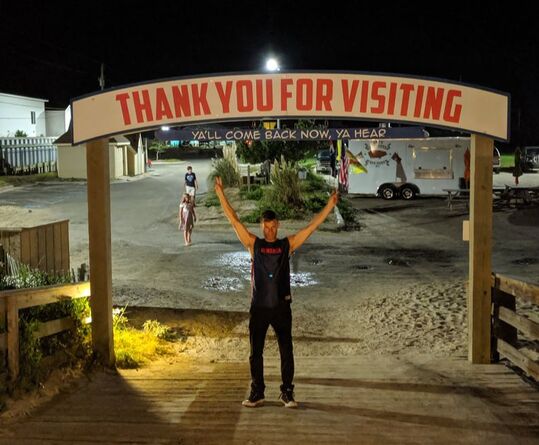
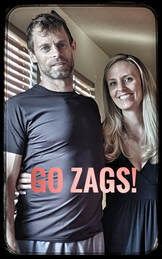
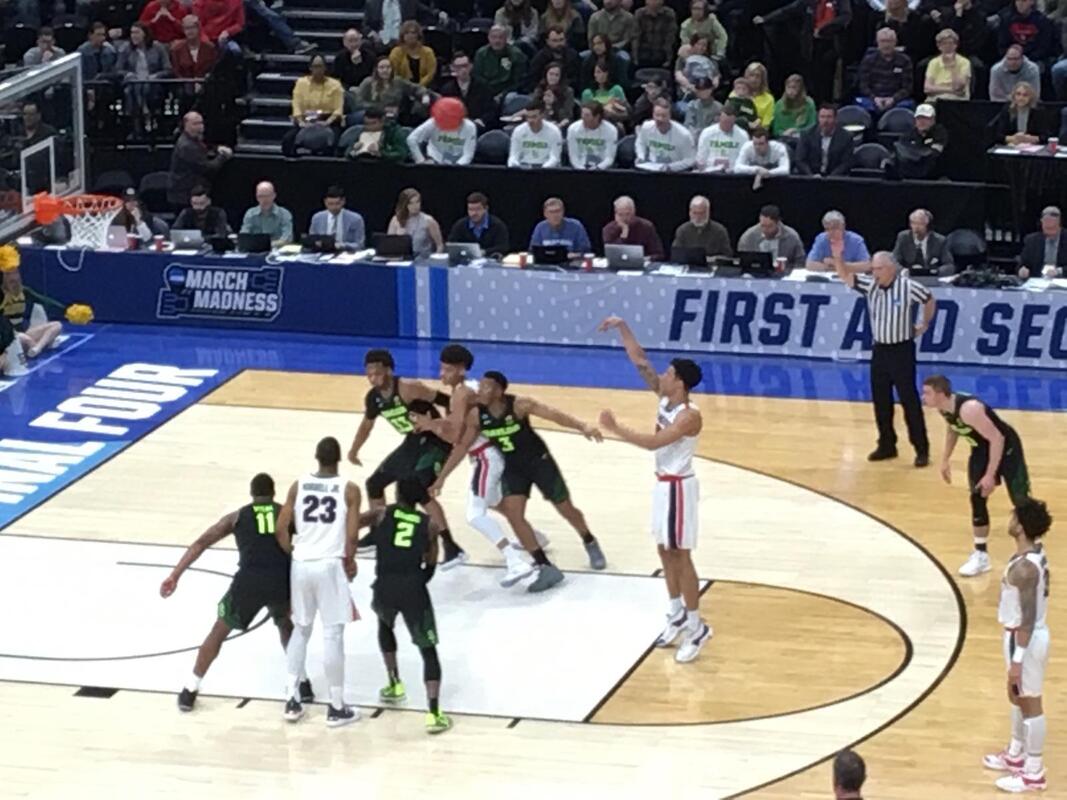
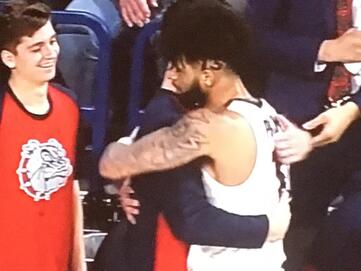
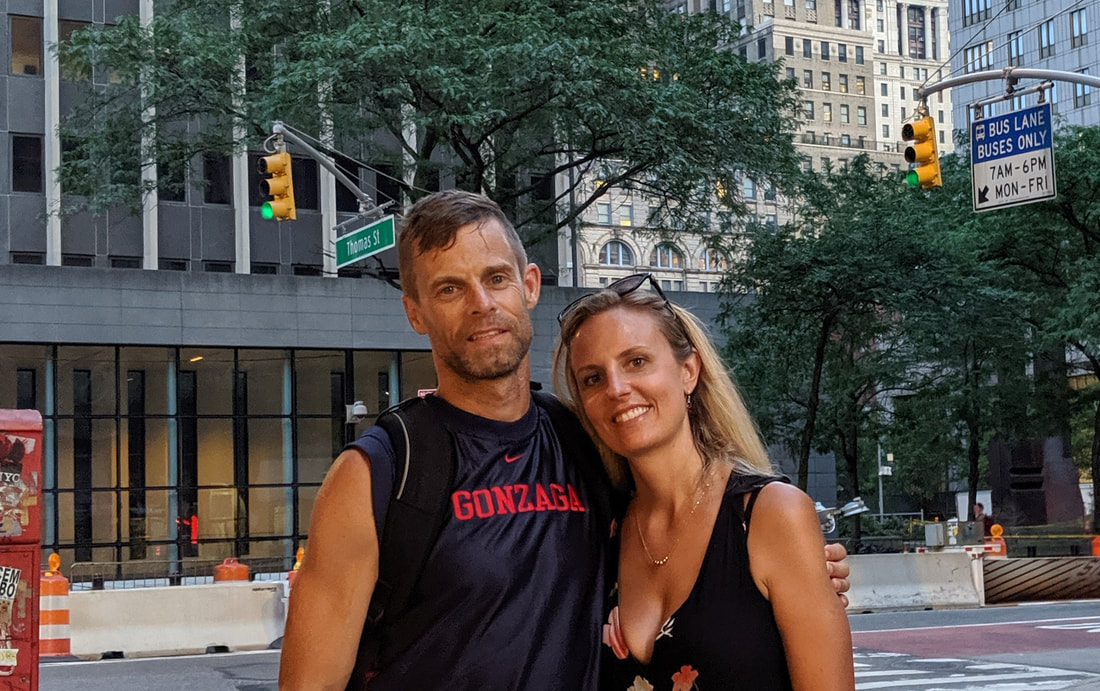
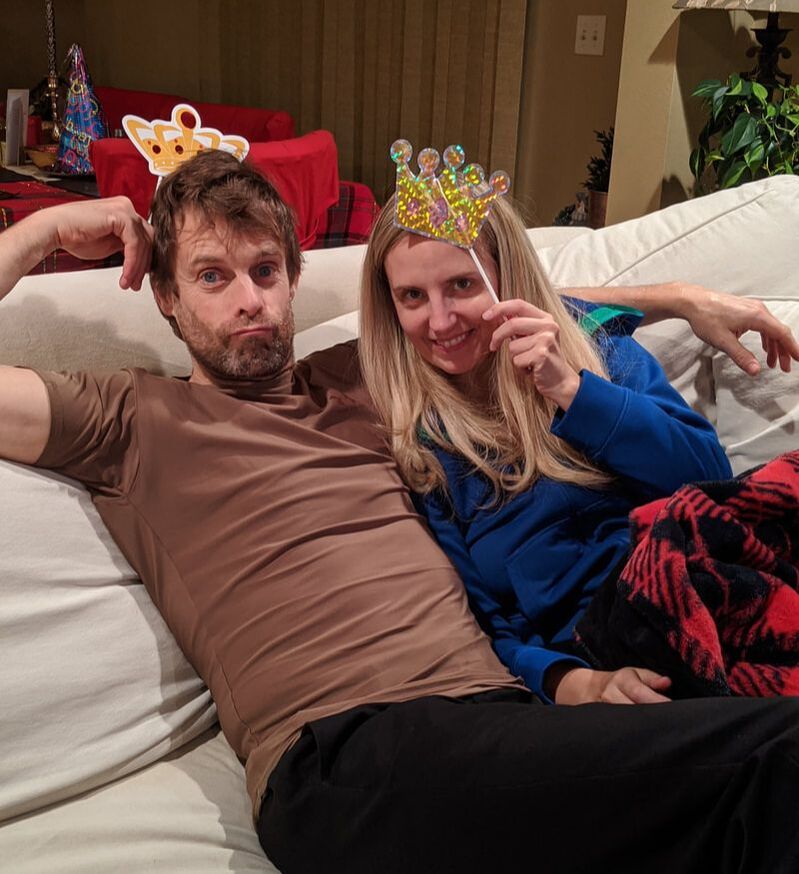
 RSS Feed
RSS Feed
